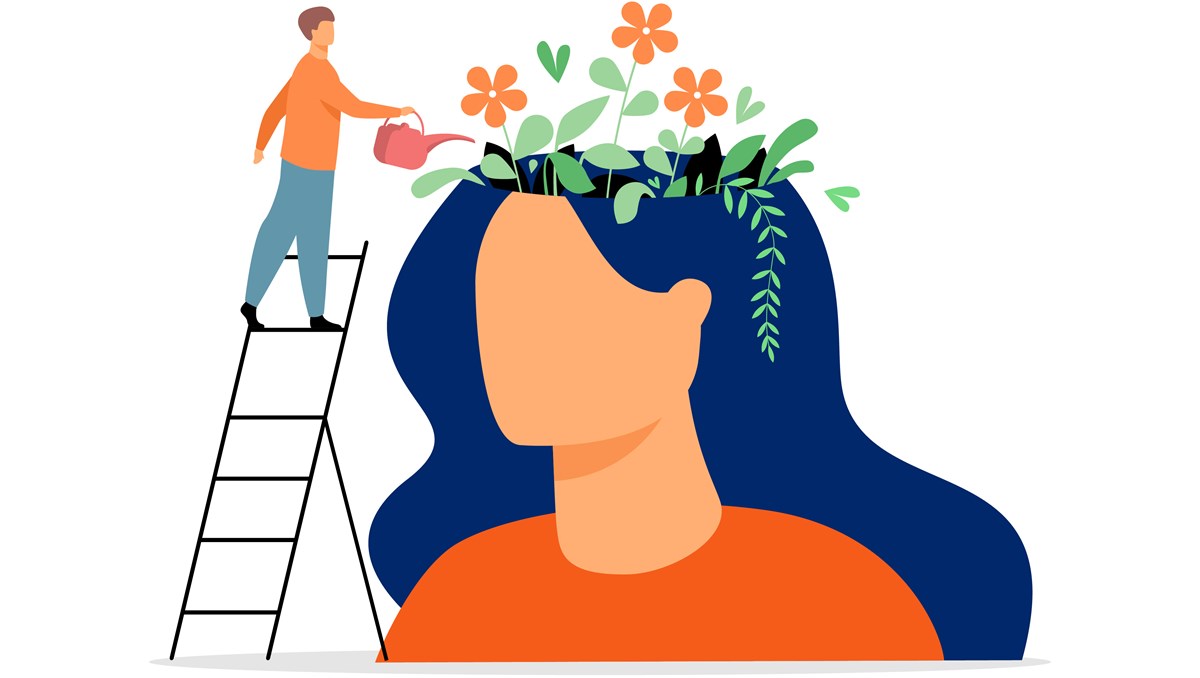Mental Health in the U.S. is improving for people with mental illness and their families. The Bad News: Mental health is still stigmatized. The good news is that there’s no longer a stigma attached to mental illness. There’s more access to treatment, and people are more accepting of those with mental health conditions.
America is facing a mental health crisis. Suicide rates have increased by more than 50% since 1999. We are losing more people to suicide than to car accidents.
Today, we’re going to look at what mental health in the U.S. looks like. Mental health in the U.S. is a huge problem. According to the CDC, nearly one in five adults in the United States has some mental illness.
According to the National Alliance on Mental Illness (NAMI), “The number of people living with mental illness is growing, and the stigma associated with it is declining.” That means there is hope for change.
The NAMI reports that over half of all Americans say they have a family member or close friend with a mental illness. This statistic is a positive sign because it suggests that people are beginning to accept and understand mental illness.
But mental health is still a very misunderstood issue. Many people don’t realize that mental illness is not just a matter of personal responsibility. It is a serious public health issue.

Prevention of mental illness
According to a new analysis by the Pew Research Center, the United States is making progress in improving mental health treatment. Mental health conditions are at an all-time high in the U.S., and more than 45 million adults struggle with mental illness.
The mental health of Americans has been improving for more than two decades. Today, far fewer people than ever live in extreme poverty, and a record number of people are graduating high school and college.
However, despite these improvements, too many people in the U.S. still struggle with mental illness.
Did you know that mental health disorders are the leading cause of disability in the United States? That’s right! In 2016, more than 16 million adults had some form of mental illness in the United States, according to the National Alliance on Mental Illness.
Most people don’t understand mental health issues, and when they do, they often try to avoid the topic. There are many reasons why mental health issues are so common in the U.S. Some of the factors include:
The high rate of incarceration in the U.S.
The war on drugs.
Harsh social norms.
The opioid epidemic.
The U.S. has the highest rate of major depressive disorder (MDD) and anxiety disorders worldwide. It is estimated that about 16 percent of U.S. adults suffer from depression in their lifetime.
Mental health is still very much a huge issue in the United States, and there is a lot of good news that needs to be heard about. This article provides great information and resources for people looking for the best ways to deal with this epidemic.
While we must work towards addressing mental health and well-being, some of the biggest gains have already been made.
The Good News
Mental health in the U.S. has been in a state of decline for quite some time now. According to the World Health Organization (WHO), over 450 million people worldwide suffer from depression. However, many people still don’t realize they have a mental health condition.
There’s nothing worse than suffering from depression. But that’s exactly what many Americans are dealing with right now.
We are experiencing a mental health crisis in the United States. While many people are aware of the issues that contribute to mental illness, a growing number of people are unaware of how to get help.
In the past, people diagnosed with depression were often told to “snap out of it” or “pull themselves together”. Today, we know that these strategies are ineffective and can make the situation worse.
Instead of being told to “buck up” or “stop being a baby”, people are encouraged to seek professional help.
I’m glad to see that mental health is finally being talked about. But it’s still not enough. There are still too many people who have mental illnesses who need treatment.

Reducing stigma
The mental health industry has seen a resurgence in recent years. This is partly due to increased awareness and understanding of mental illness but also because people finally recognize that mental health is just as important as physical health.
If you’ve been following my blogs for a while now, you know I’m a big advocate of mental health.
This is because I have experienced the effects of mental illness first-hand, and know the importance of taking care of ourselves.
And yet, despite all of this, we’re still struggling to get people the help they need.
As a result, many people don’t even know how to access the help they need.
Mental health treatment is too expensive. Insurance companies don’t cover it. And the stigma against mental illness makes it hard for people to seek the help they need.
Worse, there’s a serious shortage of mental health professionals. This means that even when people manage to get the help they need, they often wait long for their appointments.
Fortunately, things are changing. More and more people are talking about mental health, more and more mental health professionals are being trained, and more and more insurance companies are covering it.
Reducing stigma
I started getting depressed and self-harming when I was about 14. I had an eating disorder and struggled with body image. I didn’t have a great support system and just wanted to be left alone. I became isolated.
I started seeing a counselor who helped me through my issues, and I also started getting help from a therapist who specialized in trauma. I was also diagnosed with major depressive disorder when I was 20.
I’m lucky to have family around me, but not all people are as fortunate. I am glad that things are changing now. My generation is more open to talking about mental health than ever before.
Much progress has been made in the last few years regarding mental health. Many of us may be living with depression or anxiety without even knowing it.
Many people are also seeking help for their mental health issues because they know better ways to manage and treat them.
There are also a lot of resources available to help. But it is important to know where, what to look for, and how to ask the right questions to find the best information possible.

Frequently Asked Questions (FAQs)
Q: What do you do to stay positive and hopeful when things seem tough?
A: I keep myself busy. I do sports, dance, and just anything that keeps me active.
Q: What would you tell someone considering taking a mental health day off or who had just taken one?
A: If you want to get better, then take time off. I understand why people have to take time off, but it’s not a good solution to get better.
Q: Have you ever had any thoughts of suicide?
A: Yes, I’ve thought about it.
Q: How do you deal with depression?
A: I try to get out, go for walks, and exercise as much as possible. I know that if I don’t do anything, I’ll go crazy.
Q: Why do you think we don’t discuss mental health in the media or in our everyday life more?
A: Because it is considered a taboo subject. You can’t talk about mental health because it’s considered something shameful. It’s regarded as an excuse. People are afraid of being labeled as “crazy.” But everyone is affected by mental illness, and there is no way to cure it, but you can control how it affects your life. It doesn’t make you crazy; it makes you human. Everyone has moments where they feel like their mind is playing tricks on them. Everyone struggles with this. It is what keeps us human. Once society starts discussing it more openly, we won’t have to worry about labels anymore.
Myths About Mental Health
1. Most people have mental health problems.
2. Mental health problems can only be treated with medication.
3. Mental health problems are just part of aging.
Conclusion
The good news is that we are in the middle of an unprecedented mental health crisis in the United States.
Despite these statistics, most people still don’t know where to seek help or how to start treating their mental health issues.
The stigma of seeking mental health care is still very strong, and people tend to avoid getting help.
However, the fact is, we all need to know that we can get the help we need.
We live in a time when mental health is finally becoming a priority. But there’s still a long way to go. We’re not even close to treating mental illness like physical illness.
Millions of people are suffering because they haven’t been diagnosed and treated.
And that’s a problem that has only worsened over the past few decades.
So, while it’s great that more resources are available to those with a mental illness, there’s still a long way to go.
And while you can’t control every single aspect of your life, you can take steps to improve your mental health. This includes being compassionate and kind to yourself.
If you’ve read through this entire list of articles, I hope you learned a lot and that you can apply these ideas to your life.
If you are struggling with mental health issues, several resources are available to help.

